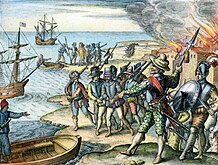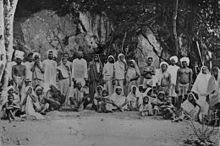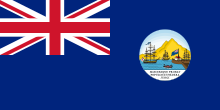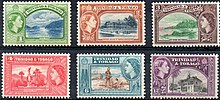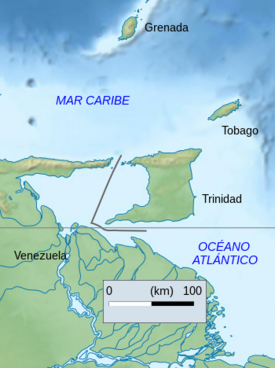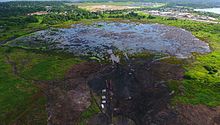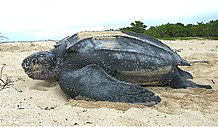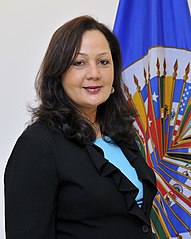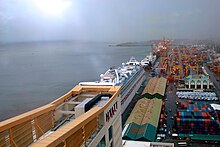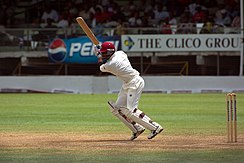Trinidad and Tobago
Trinidad and Tobago, officially the Republic of Trinidad and Tobago, is a sovereign island country located in the Caribbean Sea, in northern South America. Made up of the main islands, Trinidad and Tobago, and numerous other much smaller islands, it is located 130 kilometers south of Grenada and 11 kilometers off the northeast coast of Venezuela.
In addition, it shares maritime borders with Barbados to the northeast, Grenada to the northwest, and Venezuela to the south and west. Trinidad and Tobago is generally considered to be part of the Antilles. According to some geographical definitions, Trinidad and Tobago is also part of the Windward Islands and the Lesser Antilles, while other definitions consider it to be part of the South American continent.
Trinidad was inhabited for centuries by Amerindian peoples before becoming a colony of the Spanish Empire, following the arrival of Christopher Columbus in 1498. Spanish Governor José María Chacón turned it over to a British fleet under Ralph Abercromby in 1797. During the same period, Tobago changed hands between Spanish, British, French and Dutch settlers more times than any other in the Caribbean. Trinidad and Tobago was ceded to Great Britain in 1802 under the Treaty of Amiens as separate states and united in 1889. Trinidad and Tobago gained independence in 1962 and became a republic in 1976.
Trinidad and Tobago has the third highest GDP per capita in the Americas, according to purchasing power parity (PPP), after the United States and Canada. It is recognized by the World Bank as a high-income economy. Unlike most Caribbean nations and territories, which rely heavily on tourism, the economy is primarily industrial, with an emphasis on oil and petrochemicals; much of the nation's wealth is derived from its vast reserves of oil and natural gas.
Trinidad and Tobago is known for its African and Indian cultures, which are reflected in its large and famous celebrations of Carnival, Diwali, and Hosay, as well as being the birthplace of steelpan, limbo, and musical styles such as calypso, soca, rapso, parang, chutney and chutney soca.
Toponymy
Historian Joseph Guého stated that the Amerindian name for Trinidad was Cairi or "Land of the hummingbird", derived from the Arawak name for hummingbird, ierèttê or yerettê . However, other authors dispute this etymology: some claim that cairi does not mean hummingbird (it is suggested that tukusi or tucuchi is the correct word) and others claim that kairi, or iere, simply means "island". Christopher Columbus renamed it "La Isla de la Trinidad", fulfilling a promise made earlier. embarking on his third voyage of exploration. Tobago's cigar shape, or native use of tobacco, may have given it its Spanish name (cabaco, tavaco, tabaco) and possibly some of its other Amerindian names, as Aloubaéra ('black shell') and Urupaina ('big snail'), although the English pronunciation is /təˈbeɪɡoʊ /.
History
Pre-Hispanic era
Both Trinidad and Tobago were originally settled by Amerindians who came via South America. Trinidad was first inhabited by pre-agricultural Archaic peoples at least 7,000 years ago, making it the oldest area in the Caribbean. The Banwari Trail, in southwestern Trinidad, is the oldest archaeological site in the Caribbean, dating back to 5000 BC. Several waves of migration took place in the following centuries, which can be identified by differences in their archaeological remains. At the time of European contact, Trinidad was occupied by various Arawakan-speaking groups, such as the Nepoya and Suppoya, and by Caribbean-speaking groups, such as the Yao, while Tobago was occupied by the Insular Caribs and the Galibi. Trinidad was known to the natives as Ieri ('Land of the Hummingbird').
European colonization
Spanish domain
Christopher Columbus arrived at the main island on July 31, 1498 and called it "Land of the Holy Trinity" while he called what is currently called Tobago "Bella Forma". The domain of this archipelago was later disputed by the Spanish, English, Dutch and French; there was even a colony of Latvians from Courland.
In 1530, Antonio Sedeño obtained a contract to settle in Trinidad with the goal of discovering El Dorado and controlling the slave trade. In 1532 he tried to create a settlement, but was prevented at the Battle of Cumucurapo. He retired to Margarita Island and returned the following year, when he was able to build his settlement at Cumucurapo (present-day Mucurapo) in Port of Spain. After the failed attempt to attract more colonists to Trinidad, Sedeño was forced to withdraw in 1534.
In 1553, Juan Sedeño was authorized to settle in Trinidad, but the contract was never executed. In 1569 Juan Ponce de León built the Circumcision colony, probably near present-day Laventille. In 1570 the colony was abandoned. In 1592 Antonio de Berrío established the first permanent enclave, San José de Oruña. Walter Raleigh, in search of El Dorado in South America, landed in Trinidad on March 22, 1595 and attacked San José de Oruña, capturing both Berrío and the Topiawari chief.
The province of Trinidad was created in the 16th century by the Spanish, with its capital being San José de Oruña. On September 6, 1777, the Spanish governor Luis de Unzaga y Amézaga created the Captaincy General of Venezuela, integrating Trinidad and Tobago within his territory, as well as others such as Guayana, Cumaná and the island of Margarita. The open and tolerant character of Governor Unzaga, married to a French Creole, allowed Trinidad's free trade, attracting French settlers, and its economy improved remarkably. But during the Napoleonic Wars, in February 1797, a British force began the occupation of the territory.
British Rule
The British had begun to take an interest in Trinidad, and in 1797 a British force led by General Ralph Abercromby launched an invasion of Trinidad. His squadron sailed through Las Bocas and anchored off the coast of Chaguaramas. Seriously outnumbered, José María Chacón decided to capitulate to the British without a fight. Trinidad thus became a British crown colony, with a majority French-speaking population and Spanish laws. British rule was later formalized with the Treaty of Amiens (1802). The colony's first British governor was Thomas Picton, but his heavy-handed approach to imposing British authority, which included the use of torture and arbitrary arrests, led to his removal from office.
The British government caused an influx of settlers from the United Kingdom and the British colonies in the Eastern Caribbean. English, Scottish, Irish, German and Italian families arrived, as well as some free blacks known as "Merikins" who had fought for Britain in the War of 1812 and were granted land in southern Trinidad. British rule, new states were created, and the importation of slaves increased, but by then support for abolitionism had grown enormously, and the slave trade was under attack in England. Slavery was abolished in 1833, after which former slaves served a "learning" period. In 1837, Daaga, a West African slave trader who had been captured by Portuguese slavers and later rescued by the British navy, was conscripted into the local regiment. Daaga and a group of his compatriots mutinied at the San José barracks and headed east in an attempt to return to his homeland. The mutineers were ambushed by a militia unit outside the city of Arima. The revolt was crushed at the cost of some 40 dead, and Daaga and his group were later executed at St Joseph's. The apprenticeship system ended on August 1, 1838 with full emancipation. However, an overview of population statistics in 1838 clearly reveals the contrast between Trinidad and its Caribbean neighbors: after the emancipation of the slaves in 1838, Trinidad had only 17,439 slaves, and 80% of slave owners they had enslaved fewer than 10 people each. By contrast, Jamaica, twice the size of Trinidad, had about 360,000 slaves.
Indian Immigration
After the emancipation of the African slaves, many refused to continue working on the plantations and moved to urban areas such as Laventille and Belmont, east of Port of Spain. As a result, a severe shortage of agricultural labor arose.. The British made up for this by instituting a system of bonded labor contracts. Various nationalities were recruited under this system, including Indians, Chinese, and Portuguese. Of these, East Indians were the most imported, beginning on May 1, 1845, when 225 Indians were brought in the first shipment to Trinidad on the Fatel Razack, a Muslim-owned ship. Indians lasted from 1845 to 1917, during which time more than 147,000 Indians arrived in Trinidad to work on the sugar cane plantations.
Bond labor contracts were sometimes exploitative, to the point that historians such as Hugh Tinker called it "a new system of slavery." Despite these descriptions, it was not really a new form of slavery, as workers were paid, contracts were finite, and the idea of one individual being owned by another had been eliminated when slavery was abolished. In addition, indentured labor employers had no legal right to flog or flog their workers; the main legal sanction for compliance with hiring laws was prosecution in court, followed by fines or (more likely) jail terms. People were hired for a period of five years, with a daily salary of up to 25 pennies at the turn of the 20th century, and were guaranteed return to India at the end of their contract period. However, coercive means were often used to retain workers, and bonded labor contracts were soon extended to ten years from 1854, after planters complained that they were losing their labor force. too soon. In lieu of return passage, British authorities soon began offering tracts of land to encourage settlement, and by 1902, more than half of Trinidad's sugar cane was produced by independent cane growers, most of whom were Indians. Despite the harsh conditions of the tenancy system, about 90% of Indian immigrants decided, at the end of their tenancy periods, to make Trinidad their permanent home. East Indians entering the colony were also subject to certain crown laws that segregated them from the rest of the Trinidad population, such as the requirement that they carry a safe-conduct if they left the plantations and that, if released, they carry their "Free Papers" or certificate indicating the end of the period of easement.
However, few Indians settled on Tobago, and the descendants of enslaved Africans continued to make up the majority of the island's population. The economic crisis of the mid to late 19th century century led to widespread poverty. Discontent erupted into riots on the Roxborough plantation in 1876, in an event known as the Belmanna Uprising, after a policeman who was murdered. The British finally managed to re-establish control, but in the aftermath of the riots the Tobago Legislative Assembly voted to dissolve it and the island became it became a Crown colony in 1877. With the sugar industry on the brink of collapse and Tobago territory unprofitable, the British attached Tobago to their colony of Trinidad in 1889.
Early 20th century
In 1903, a protest against the introduction of new water rates in Port of Spain led to riots; 18 people were shot dead, and the Red House (the seat of government) was damaged by fire. An elected local assembly with some limited powers was introduced in 1913. Economically, Trinidad and Tobago remained a predominantly agricultural colony; Along with sugar cane, cocoa cultivation also contributed greatly to economic income in the late 19th century and early XX century.
In November 1919, dockers went on strike over poor management practices and low wages compared to a higher cost of living. Strikebreakers were called in to keep cargo to a minimum in ports. On December 1, 1919, striking dockers stormed the harbor and drove off the strikebreakers. They then proceeded to march on the government buildings in Port of Spain. Other unions and workers, many of them with the same demands, joined the dockers' strike, turning it into a general strike. Violence broke out and was only put down with the help of sailors from the British ship HMS Calcutta. The unity brought about by the strike was the first time there had been cooperation between the different ethnic groups of the time. Historian Brinsley Samaroo says that the 1919 strikes "seem to indicate that there was a growing class consciousness after the war and that it sometimes transcended racial sentiments".
In the 1920s, however, the collapse of the sugarcane industry, concomitant with the failure of the cocoa industry, caused widespread depression among Trinidad's rural and farm workers, and fostered the rise of of a labor movement. Conditions on the islands worsened in the 1930s with the onset of the Great Depression, and in 1937 there was an outbreak of labor unrest that caused several deaths. The labor movement sought to unite the urban working class and the agricultural working class.; key figures were Arthur Cipriani, who headed the Trinidad Workers' Association (TWA), and Tubal Uriah "Buzz" Butler, of the British Empire's Citizens and Workers Party. As the movement developed, protests became more widespread. calls for greater autonomy from British colonial rule; this effort was severely undermined by the British Home Office and by the British-educated Trinidadian elite, many of whom were descendants of the plantocracy class.
Oil was discovered in 1857, but it did not become economically important until the 1930s and later, as a result of the collapse of sugarcane and cocoa, and increasing industrialization. In the 1950s, oil had become a staple in the Trinidadian export market, and was responsible for a growing middle class among all sections of the Trinidadian population. The collapse of Trinidad's major agricultural products, followed by the Depression, and the boom in the oil economy, brought about major changes in the country's social fabric.
The presence of US military bases in Chaguaramas and Cumuto, Trinidad, during World War II, had a profound effect on society. The Americans vastly improved Trinidad's infrastructure and provided many locals with well-paying jobs; however, the social effects of having so many young soldiers stationed on the island, as well as their often undisguised racial prejudices, caused resentment. The Americans left the country in 1961.
In the post-war period, the British began a process of decolonization throughout the British Empire. In 1945 universal suffrage was introduced in Trinidad and Tobago. Political parties emerged, but they were largely divided along racial lines: Afro-Trinidadians and Tobagonians mainly supported the People's National Movement (PNM), created in 1956 by Eric Williams, and Indo-Trinidadians and Tobagonians mainly supported the People's Democratic Party (PDP), created in 1953 by Bhadase Sagan Maraj, which later merged with the Democratic Labor Party (DLP) in 1957. Britain's Caribbean colonies formed the West Indies Federation in 1958 as a vehicle for independence, but the Federation was dissolved after Jamaica withdrew following a membership referendum in 1961.
Independence
Queen
Prime Minister
Trinidad and Tobago became independent from the United Kingdom on August 31, 1962. Elizabeth II remained the Head of State as Queen of Trinidad and Tobago, represented locally by Governor General Solomon Hochoy. Eric Williams of the PNM, a leading historian and intellectual regarded as "The Father of the Nation", became the first Prime Minister, serving continuously until 1981. The dominant opposition figure in the early years of the independence was Rudranath Capildeo of the DLP. In the 1960s, the Black Power movement emerged, inspired in part by the civil rights movement in the United States. Protests and strikes became commonplace, and events came to a head in April 1970, when a protester named Basil Davis was shot dead by police. Fearing a breach of public order, the first Minister Williams declared a state of emergency and arrested many of the Black Power leaders. Some army leaders who were sympathetic to the Black Power movement, notably Raffique Shah and Rex Lassalle, attempted to mutiny; however, this was put down by the Trinidad and Tobago Coast Guard. Williams and the PNM retained power, largely due to divisions in the opposition.
In 1963, Tobago was hit by Hurricane Flora, which killed 30 people and caused massive destruction across the island. Partly as a result, tourism replaced agriculture as the main source of income for Tobago. country in the following decades.
Between 1972 and 1983, the country benefited greatly from rising oil prices and the discovery of vast new fields in its territorial waters, leading to an economic boom that vastly increased living standards. In 1976 the country became a republic within the Commonwealth, although it retained the Judicial Committee of the Privy Council as the court of last resort. The position of governor-general was replaced by that of president; Ellis Clarke was the first to fill this largely ceremonial role. Tobago gained limited self-government with the creation of the Tobago Assembly in 1980.
Williams died in 1981, being replaced by George Chambers, who led the country until 1986. By then, the fall in the price of oil had triggered a recession, causing rising inflation and unemployment. The opposition united under the banner of the National Alliance for Reconstruction (NAR) and won the 1986 general election, in which NAR leader A.N.R. Robinson became the new Prime Minister. Robinson was unable to hold united the fragile coalition of the NAR, and the social unrest was caused by its economic reforms, such as the devaluation of the currency and the application of a Structural Adjustment Program of the International Monetary Fund. In 1990, 114 members of the Jamaat al Muslimeen, led by Yasin Abu Bakr (formerly known as Lennox Phillip) stormed the Red House (seat of Parliament) and Trinidad and Tobago Television, the country's only television station at the time, keeping Robinson and the country's government held hostage for six days before surrendering. The coup plotters were promised an amnesty, but upon their surrender they were arrested, although they were later released after a lengthy legal dispute.
Patrick Manning's PNM returned to power after the 1991 general election in Trinidad and Tobago. Hoping to take advantage of the improving economy, Manning called a snap election in 1995, but the result was a parliament with no majority. Two NAR representatives supported the opposition United National Congress (UNC), which had split from the NAR in 1989, and thus seized power under Basdeo Panday, who became the country's first Indo-Trinidadian Prime Minister. After a period of turmoil Sparked by a series of inconclusive election results, Patrick Manning returned to power in 2001, holding office until 2010.
Since 2003 the country entered a second oil boom, and oil, petrochemicals and natural gas continue to be the backbone of the economy. Tourism and public service are the main pillars of Tobago's economy, although the authorities have attempted to diversify the economy. A corruption scandal led to Manning's defeat at the hands of the newly formed People's Partnership coalition in 2010, and Kamla Persad-Bissessar became the country's first female prime minister. However, allegations of corruption plagued the new administration, and the PP was defeated in 2015 by Keith Rowley's PNM. In August 2020, the ruling People's National Movement won the general election, meaning the current Prime Minister Keith Rowley will serve a second term.
Geography
Trinidad and Tobago is situated between 10° 2' and 11° 12' north latitude and 60° 30' and 61° 56' longitude west, with the Caribbean Sea to the north, the Atlantic Ocean to the east and south, and the Gulf of Paria to the west. It is situated in the extreme southeast of the Caribbean region, with the island of Trinidad just 11 km off the coast of Venezuela on the South American mainland, through the Colon Channel. The Trinidadian archipelago is a physiographic extension of South America. With an area of 5,128 km², the country is made up of two main islands, Trinidad and Tobago, separated by a 32 km strait, plus several much smaller islands, such as Chacachacare, Monkeys, Eggs, Big Gaspar (or Gasparee), Little Tobago and Saint Giles.
Trinidad has an area of 4,827 km² (representing 94.1% of the total area of the country), with an average length of 80 kilometers and an average width of 59 kilometers. Tobago has an area of about 301 km², or 5.9% of the country's area, is 41 km long and 12 km wide. Trinidad and Tobago is located on the continental shelf of South America, so it is considered that geologically it is entirely in South America.
Most of the population resides in Trinidad, which is why the largest towns and cities are located there. In it there are four main municipalities: the capital, Port of Spain, San Fernando, Arima and Chaguanas. The main city of Tobago is Scarborough.
Orography
The terrain of the islands is a mix of mountains and plains. In Trinidad, the Cordillera del Norte runs parallel to the north coast and contains the highest peak in the country (Cerro del Aripo), 940 meters above sea level, and the second highest (El Tucuche, 936 meters). The rest of its geography is, in general, flatter, excluding the Central Cordillera and the Montserrat Hills in its center and the Southern Cordillera and the Trinidad Hills in the south. The three mountain ranges determine the drainage pattern of Trinidad. The eastern coast stands out for its beaches, especially that of La Manzanilla. The island contains several large swamp areas, such as the Pantano de Caroni and the Pantano de Nariva. The main bodies of water in Trinidad are Hollis Reservoir, Navet Reservoir, and Caroni Reservoir. Trinidad is made up of a variety of soil types, the majority being fine sands and heavy clays. The alluvial valleys of the northern cordillera and the soils of the east-west corridor are the most fertile. Trinidad also stands out for containing Lago de la Brea, the largest natural deposit of asphalt in the world. Tobago has a plain in the southwest, while the eastern half is more mountainous, culminating in Pigeon Peak, the highest point at 550 meters. Tobago also has several coral reefs along its shores.
Hydrography
There are numerous rivers and streams in Trinidad; the most prominent are the 5 km long Ortoire River, which runs east into the Atlantic, and the 40 km long Caroni River, which flows into the Gulf of Paria. Most of Trinidad's soils are fertile, with the exception of the unstable terrain found in the southern part.
There are several rivers in Tobago, but flooding and erosion are less severe than in Trinidad. The coast has several bays and beaches.
Climate
Sitting between the tropics, Trinidad and Tobago enjoys a tropical maritime climate influenced by northeasterly winds. In Trinidad, the average temperature is 26 °C, and the average maximum temperature is 34 °C during the day and about 20 °C on average at night. Humidity is high, particularly during the wet season, when it averages 85%.
Trinidad receives an average of 2,110 mm of rain per year, generally concentrated in the months of June to December, when shortly, intense deluges frequently occur. Precipitation increases in the Northern Range, where it can receive up to 3810 mm. During the dry season, droughts attack the upper central part.
Tobago's climate is similar to Trinidad's but slightly cooler. Its wet season extends from June to December; the amount of annual rainfall is 2000 mm.
The islands are outside the hurricane zone; however, Hurricane Flora damaged Tobago in 1963, and Tropical Storm Alma caused severe damage to Trinidad in 1974.
| Month | Ene. | Feb. | Mar. | Open up. | May. | Jun. | Jul. | Ago. | Sep. | Oct. | Nov. | Dec. | Annual |
|---|---|---|---|---|---|---|---|---|---|---|---|---|---|
| Temp. max. abs. (°C) | 33.2 | 33.0 | 34.9 | 34.9 | 35.3 | 34.4 | 33.5 | 34.2 | 37.0 | 35.5 | 33.8 | 33.2 | 37.0 |
| Average temperature (°C) | 28.0 | 28.9 | 30.3 | 31.0 | 33.1 | 31.5 | 31.3 | 31.7 | 32.2 | 32.2 | 31.5 | 31.1 | 31.1 |
| Temp. medium (°C) | 17.0 | 19.2 | 20.7 | 22.0 | 23.0 | 23.3 | 23.0 | 23.0 | 23.1 | 22.6 | 22.3 | 21.0 | 21.7 |
| Temp. min. abs. (°C) | 14.6 | 16.1 | 16.7 | 17.2 | 18.9 | 19.7 | 18.3 | 18.9 | 19.4 | 19.4 | 17.9 | 15.7 | <td style="border-left-width:medium; background:#FFFFFF;color:#'|
| Rains (mm) | 42.9 | 39.8 | 16.9 | 27.7 | 67.5 | 155.6 | 193.6 | 244.0 | 190.5 | 143.3 | 210.5 | 75.7 | 1408.0 |
| Rainy days (≥ 0.1 mm) | 11 | 10 | 6 | 6 | 11 | 20 | 21 | 19 | 16 | 15 | 18 | 13 | 166 |
| Hours of sun | 241.3 | 231.3 | 248.3 | 237.5 | 233.2 | 183.7 | 205.9 | 212.5 | 197.1 | 207.4 | 197.7 | 214.5 | 2610.4 |
| Relative humidity (%) | 81 | 80 | 77 | 77 | 79 | 84 | 84 | 84 | 84 | 85 | 86 | 84 | 82 |
| Source No. 1: World Meteorological Organization | |||||||||||||
| Source No. 2: NOAA (sun, extremes and humidity) | |||||||||||||
Biodiversity
Since Trinidad and Tobago lies on the continental shelf of South America, and was physically connected to the South American mainland in ancient times, its biological diversity is different from that of most other Caribbean islands, and it has much more in common with that of Venezuela. The main ecosystems are: coastal and marine (coral reefs, mangroves, open ocean and seagrass beds); forestry; freshwater (rivers and streams); karsts; artificial ecosystems (agricultural land, freshwater dams, secondary forests); and savannah. On August 1, 1996, Trinidad and Tobago ratified the 1992 Rio Convention on Biological Diversity, and has produced a biodiversity action plan and four reports outlining the country's contribution to biodiversity conservation. These reports formally recognize the importance of biodiversity for the well-being of the country's population through the provision of ecosystem services.
Information on vertebrates is good, with 472 bird species (2 endemic), about 100 mammals, about 90 reptiles (some endemic), about 30 amphibians (including several endemics), 50 water fish dulce and at least 950 marine fish. Mammal species include ocelot, West Indian manatee, collared peccary (locally known as quenk), red-rumped agouti, Lappon, red deer, Neotropical otter, the weeping capuchin and the red howler monkey. Among the largest reptiles are 5 species of sea turtles that nest on the beaches, the green anaconda, the boa constrictor and the spectacled caiman. There are at least 47 species of snakes, of which only four are dangerous venomous species (only in Trinidad and not in Tobago), lizards such as the green iguana, Tupinambis cryptus, and some species of freshwater and land turtles. they are present. Of the amphibians, the golden tree frog is only found on the highest peaks of the Northern Cordillera of Trinidad and, nearby, on those of the Paria Peninsula in Venezuela. Marine life is abundant, with various species of sea urchins, corals, lobsters, anemones, starfish, mantas, dolphins, porpoises, and whale sharks present in the waters of the islands. The introduced pterois is considered a pest as it eats many native fish species and has no natural predators; Efforts are currently underway to eliminate the numbers of this species. The country contains five terrestrial ecoregions: Trinidad and Tobago moist forests, Lesser Antilles dry forests, Trinidad and Tobago dry forests, Windward Islands xeric scrub, and Trinidad mangroves.
Trinidad and Tobago is especially noted for its large number of bird species, and is a popular destination for bird watchers. Notable species include the scarlet ibis, cocrico, egret, glossy cowbird, bananaquit, oilbird and various species of honeycreeper, trogon, toucan, parrot, tanager, woodpecker, antbird, the kites, the falcons, the boobies, the pelicans and the vultures; there are also 17 species of hummingbirds, including the Tufted Coquette, which is the third smallest in the world.
Information on invertebrates is sparse and very incomplete. Some 650 butterflies, at least 672 beetles (from Tobago alone), and 40 corals have been recorded. Other notable invertebrates include the cockroach, the leafcutter ant, and numerous species of mosquitoes, termites, spiders, and tarantulas.
Although the list is far from complete, 1,647 species of fungi, including lichens, have been recorded. It is likely that the true total number of fungi is much higher, since the generally accepted estimate is that only 7% of all fungi in the world have so far been discovered. In a first effort to estimate the number of endemic fungi, 407 species were provisionally enumerated.
Information on microorganisms is scattered and very incomplete. Nearly 200 species of marine algae have been recorded. The true total number of species of microorganisms must be much higher.
Thanks to a recently published checklist, Trinidad and Tobago's plant diversity is well documented, with some 3,300 species (59 endemics) recorded. Despite the significant logging, forests still cover about 40% of the country, and there are some 350 different species of trees. One notable tree is the manchineel, which is extremely poisonous to humans, and even simply touching its sap can cause severe skin blistering; the tree is often covered in warning signs. The country obtained an average Forest Landscape Integrity Index score of 6.62/10 in 2019, which places it in 69th place worldwide out of 172 countries.
Threats to the country's biodiversity include excessive hunting and poaching, habitat loss and fragmentation (particularly due to forest fires and land clearing for quarrying, agriculture, squatting, real estate and industrial development, and road construction), water pollution, and the introduction of invasive species and pathogens.
Government and politics
Chairperson
since March 19, 2018
Prime Minister
since 9 September 2015
Trinidad and Tobago is a representative democratic republic with a two-party system and a bicameral parliamentary system based on the Westminster system.
The Head of State of Trinidad and Tobago is the President, currently Paula-Mae Weekes. This largely ceremonial role replaced that of the Governor General (representing the monarch of Trinidad and Tobago) when Trinidad and Tobago became a republic in 1976. The head of government is the Prime Minister, currently Keith Rowley. The President is elected by an electoral college made up of all the members of both houses of Parliament.
Following a general election, which is held every five years, the president appoints the person who has the support of the majority of the House of Representatives as prime minister; he has generally been the leader of the party that has won the most seats in elections (except in the case of the 2001 general election).
Since 1980, Tobago has also had its own elections, separate from the general elections. In these elections, the members who are part of the unicameral Assembly of Tobago are elected.
Parliament consists of the Senate (31 seats) and the House of Representatives (41 seats, plus the President). Members of the Senate are appointed by the President; 16 government senators are appointed on the advice of the prime minister, six opposition senators are appointed on the advice of the Leader of the opposition, currently Kamla Persad-Bissessar, and nine independent senators are appointed by the president to represent other sectors of the civil society. The 41 members of the House of Representatives are elected by the people for a maximum term of five years in a single-member majority system.
Armed Forces
The Trinidad and Tobago Defense Force (TTDF) is the military organization responsible for the defense of the Republic of Trinidad and Tobago. It consists of the Regiment, Coast Guard, Air Guard, and Defense Force Reserves. Created in 1962 after the independence of Trinidad and Tobago from the United Kingdom, the TTDF is one of the largest military forces in the English-speaking Caribbean.
Its mission is "to defend the sovereign good of the Republic of Trinidad and Tobago, contribute to the development of the national community and support the State in the fulfillment of its national and international objectives." The Defense Forces have participated in national incidents, such as the 1990 coup attempt, and in international missions, such as the United Nations Mission in Haiti between 1993 and 1996.
In 2019, Trinidad and Tobago signed the UN treaty on the prohibition of nuclear weapons.
Foreign Relations
Trinidad and Tobago maintains close relations with its Caribbean neighbors and with its main North American and European trading partners. As the most industrialized and second most populous country in the English-speaking Caribbean, Trinidad and Tobago takes a leading role in the Caribbean Community (CARICOM) and strongly supports the economic integration efforts of this organization. It also actively participates in the Summit of the Americas process and supports the establishment of the Free Trade Area of the Americas.
As a member of CARICOM, it strongly supported United States efforts to bring political stability to Haiti, contributing personnel to the Multinational Force in 1994. Upon independence in 1962, Trinidad and Tobago joined the United Nations and the Commonwealth of Nations. In 1967 it became the first Commonwealth country to join the Organization of American States (OAS). In 1995, Trinidad hosted the inaugural meeting of the Association of Caribbean States and has become at the headquarters of this 35-member group, which aims to promote economic progress and integration between its States.
Human Rights
Amnesty International denounces torture and questionable trials in Trinidad and Tobago. There are various cases of incorrect application of the death penalty. Homosexuality was not legal until 2018. Article 8 (18/1) of the immigration law prohibited homosexuals from entering the country.
In 2002 the United Nations Human Rights Committee ruled on the case Clement Boodoo v. Trinidad and Tobago, considering the existence of a violation of articles 7 [right not to be tortured], 9(3) [right to defense], 10(1) [respect for the dignity of detainees], 14(3)(c) [right to a prompt trial], 17 [ respect for private life] and 18 [right to religious freedom] of the International Covenant on Civil and Political Rights. According to the facts, Clement Boodoo was subjected to torture and degrading treatment while he was confined in the Carrera prison (and sometimes in the Port of Spain prison) between 1990 and 1998. During this time, he lived in an extremely small space and in very poor sanitation, barely being allowed to go outdoors (as a result of which, he lost his vision and was on the verge of going blind). At times he was starved and humiliated. He also had his religious clothing confiscated and his beard cut off against his will (as it was a religious symbol of his Muslim faith). He was also not allowed to attend Muslim religious ceremonies, which other Christian or Muslim inmates were allowed to do.
In terms of human rights, regarding membership of the seven bodies of the International Bill of Human Rights, which include the Human Rights Committee (HRC), Trinidad and Tobago has signed or ratified:
Territorial organization
Trinidad is divided into 14 regions and municipalities, made up of nine regions and five municipalities, which have a limited level of autonomy. The various councils are made up of a mix of elected and appointed members. Elections are held every three years. Tobago is administered by the Tobago Assembly. Previously, the country was divided into counties.
Municipalities:
- Arima
- Chaguanas
- Point Fortin
- Port of Spain
- San Fernando
Corporate Regions:
- Couva-Tabaquite-Talparo Corporate Region
- Corporate Region of Diego Martín
- Corporate Region of Criminal-Debe
- Princes Town Corporate Region
- Rio Claro-Mayaro Corporate Region
- Corporate Region of San Juan-Laventille
- Great Blood Corporate Region
- Corporate Region of Siparia
- Corporate Region of Tunapuna-Piarco
Autonomous Region:
- Autonomous Region of Tobago
Economy
Trinidad and Tobago is one of the richest economies in the Caribbean and ranks among the top 40 (2010 data) of the world's 70 high-income countries. Its per capita gross national income of $20,070 (2014 Atlas gross national income) is one of the highest in the Caribbean. In November 2011, the OECD removed Trinidad and Tobago from its list of developing countries. Trinidad's economy is heavily influenced by the oil industry. Tourism and the manufacturing industry are also important to the local economy. Tourism is a growing sector, especially in Tobago, although proportionally it is much less important than in many other Caribbean islands. Among the agricultural products, citrus fruits and cocoa stand out. It also supplies manufactured goods, primarily food, beverages, and cement, to the Caribbean region. The country's currency is the Trinidad and Tobago dollar (TT$), which is divided into 100 cents. Banknotes exist in denominations of 1, 5, 10, 20, 50 and 100 Trinidad and Tobago dollars. The coins exist in denominations of 1, 5, 10, 25 and 50 cents.
Oil and Gas
Trinidad and Tobago is the Caribbean's leading producer of oil and gas, and its economy is heavily dependent on these resources. Oil and gas account for about 40% of GDP and 80% of exports, but only 5% of employment. Recent growth has been fueled by investments in liquefied natural gas (LNG), petrochemicals, and steel. There are other petrochemical, aluminum and plastics projects in various stages of planning.
The country is also a regional financial center, and the economy has a growing trade surplus. Atlantic LNG's expansion over the past six years has created the largest phase of sustained economic growth in Trinidad and Tobago. The nation is an LNG exporter, supplying a total of 13.4 billion m³ in 2017. The largest markets for Trinidad and Tobago's LNG exports are Chile and the United States.
Trinidad and Tobago has transitioned from an oil-based economy to one based on natural gas. In 2017, natural gas production amounted to 18.5 billion m³, a decrease of 0.4% compared to 2016, with 18.6 billion m³ of production. Oil production has decreased in the last decade, from 7.1 million metric tons per year in 2007 to 4.4 million metric tons per year in 2017. In December 2005, Atlantic LNG's fourth liquefied natural gas (LNG) production module or "train" began to produce. The fourth train has increased Atlantic LNG's global production capacity by almost 50% and is the largest LNG train in the world, with 5.2 million tons/year of LNG.
Creative Industry
The Government of Trinidad and Tobago has recognized the creative industries as a pathway to economic growth and development. It is one of the newest and most dynamic sectors in which creativity, knowledge and intangibles serve as a basic productive resource. In 2015, the Trinidad and Tobago Creative Industries Company Limited (CreativeTT) was created as a state agency under the Ministry of Trade and Industry with a mandate to stimulate and facilitate the business development and export activities of the creative industries in Trinidad and Tobago to generate national wealth and, as such, the company is responsible for the strategic and business development of the three niches and subsectors that are currently under its jurisdiction: music, cinema and fashion. MusicTT, FilmTT and FashionTT are the subsidiaries created to fulfill this mandate.
Agriculture
Historically, agricultural production (for example, sugar and coffee) dominated the economy; however, this sector has suffered a sharp decline since the 20th century and now only accounts for 0.4% of the GDP of the country, employing 3.1% of the active population. Various fruits and vegetables are grown, including cucumbers, eggplant, cassava, squash, dasheen (taro), and coconut; Fishing is also still practiced.
Energy policy and climate
Trinidad and Tobago is the region's leading oil and gas exporter, but fossil fuel imports provided more than 90% of the energy consumed by its CARICOM neighbors in 2008. This vulnerability led CARICOM to develop an Energy Policy that was approved in 2013. This policy is accompanied by the CARICOM Sustainable Energy Strategy and Roadmap (C-SERMS). Under this policy, renewable energy sources must contribute 20% of the total electricity generation mix in Member States by 2017, 28% by 2022 and 47% by 2027.
In 2014 Trinidad and Tobago was the third country in the world that emitted the most CO2 per capita, after Qatar and Curaçao, according to the World Bank. On average, each inhabitant produced 34.2 metric tons of CO2 in the atmosphere. By comparison, the world average was 5.0 tons per capita in the same year.
The Caribbean Industrial Research Institute, in Trinidad and Tobago, facilitates research on climate change and provides industrial support for R&D related to food security. It also performs equipment testing and calibration for major industries.
Infrastructure
Transportation
Trinidad and Tobago's transportation system consists of a dense network of highways and highways that cross the two main islands, ferries connecting Port of Spain with Scarborough and San Fernando, and international airports on both. The Uriah Butler Highway, the Churchill Roosevelt Highway, and the Sir Solomon Hochoy Highway link Trinidad, while the Claude Noel Highway is Tobago's only major highway. Public transportation options by land are public buses, private taxis, and minibuses. By sea, options are inter-island ferries and inter-city water taxis.
Trinidad has the Piarco International Airport, opened on January 8, 1931. It is located at 17.4 meters above sea level, has an area of 680 hectares and a 3,200-meter runway. The airport consists of two terminals, the North Terminal and the South Terminal. The older South Terminal was renovated in 2009 to be used as a VIP entry point during the V Summit of the Americas. The North Terminal was completed in 2001, and consists of 14 boarding gates with corridors for international flights, two domestic boarding gates at ground level and 82 counters.
In 2008, the number of passengers at Piarco International Airport was approximately 2.6 million. It is the seventh busiest airport in the Caribbean and the third busiest in the English-speaking Caribbean, after Sangster International Airport and Lynden Pindling International Airport. Caribbean Airlines, the national carrier, has its main hub at Piarco International Airport and serves the Caribbean, the United States, Canada and South America. The airline is wholly owned by the Government of Trinidad and Tobago. After an additional injection of US$50 million, the Government of Trinidad and Tobago acquired the Jamaican airline Air Jamaica on May 1, 2010, with a transition period of 6 to 12 months.
Tobago is served by the A.N.R. Robinson at Crown Point. This airport has regular services to North America and Europe. There are regular flights between the two islands, with fares heavily subsidized by the Government.
Trinidad used to have a railway network, but it was closed in 1968. There has been talk of building a new railway line, although it has not yet materialized.
Telecommunications
Trinidad and Tobago has a well-developed communications sector. The telecommunication and broadcasting sectors generated about T&T$5.63 billion ($88 billion) in 2014, which as a percentage of GDP equals 3.1%. This represented an increase of 1.9% in the total revenue generated by this industry compared to last year. Of the total telecommunication and broadcasting revenue, mobile voice services accounted for the largest share of revenue, at T$2.2 billion. Tobago (39.2%). This was followed by Internet services, which contributed $1.18 billion (21.1%). The next highest revenue sectors were fixed voice services and pay-TV services, which contributed $76 billion. US$ and US$70 billion, respectively (13.4% and 12.4%). International voice services were next, generating TT$0.27 billion (4.7%) in revenue. Free radio and television services contributed $18 billion and $13 billion respectively (3.2% and 2.4%). Finally, other contributors were "other revenue" and "leased line services"., with revenue of TT$16 billion and TT$5 billion respectively, up 2.8% and 0.9%.
There are several providers for each segment of the telecommunications market. Landline service is provided by Digicel, TSTT (doing business as bmobile) and Cable & Wireless Communications, doing business as FLOW; Cellular service is provided by TSTT (doing business as bmobile) and Digicel, while Internet service is provided by TSTT, FLOW, Digicel, Green Dot and Lisa Communications.
The internet country code top-level domain code is.tt; which is administered by the University of the West Indies since 1991.
Energy
In 1894, Edgar Tripp created the Electric Light and Power Company, Trinidad and Tobago's first electric company. In March 1895 electricity was installed for the first time in Trinidad and two of the first buildings to have electric lighting were the original Queens Park Hotel and the Princess Building.
Currently, 100% of the population has access to electricity and public lighting services. In addition, 99.26% of the population in 2016 had guaranteed access to clean energy sources to cook food.
Until 2020, Trinidad and Tobago had an installed capacity of 2,114 MW, of which 99.95% corresponded to natural gas generation and the remaining 0.05% to diesel. Electricity production in 2018 it was 9,234 GWh.
Demographics
Ethnic groups
The ethnic composition of Trinidad and Tobago reflects a history of conquest and immigration. Although the first inhabitants were of Amerindian origin, the two dominant groups in the country are now those of South Asian and African origin. Indo-Trinidadians make up the largest ethnic group in the country (approximately 35.4%); they are mainly the descendants of indentured workers from South Asia (mainly India), brought in to replace freed African slaves who refused to continue working on the sugar plantations. Through cultural preservation, many residents of Indian descent continue to uphold the traditions of their ancestral land. Indo-Trinidadians reside primarily in Trinidad; according to the 2011 census, only 2.5% of Tobago's population was of Indian descent.
Afro-Trinidadians are the second largest ethnic group in the country, with approximately 34.2% of the population identifying as Afro-descendant. Most people of African descent are descendants of slaves forcibly transported to the islands since the 16th century. This group constitutes the majority in Tobago, at 85.2%.
The bulk of the rest of the population are those who identify as mixed heritage. There are also small but significant minorities of people of Amerindian, European, Portuguese, Latino-Hispanic, Chinese, and Arab descent. Arima, in Trinidad, is a prominent center of Amerindian culture.
Religion
According to the 2011 census, Christianity is the most professed faith in the country, with 63.2% adherents. Roman Catholics are the largest Christian group in Trinidad and Tobago, with 21.60% of the total population. Pentecostal/Evangelical denominations were the third largest group, with 12.02% of the population. The rest of the population is made up of various Christian denominations: Spiritual Baptists (5.67%), Anglicans (5.67%), Seventh-day Adventists (4.09%), Presbyterians or Congregationalists (2.49%), Jehovah's Witnesses (1.47%), other Baptists (1.21%), Methodists (0.65%), and the Moravian Church (0.27%). Respondents who did not declare a religious affiliation represented 11.1% of the population, and 2.18% declared themselves irreligious.
Hindus are the second largest group at 20.4%. Hinduism is practiced throughout the country and Diwali is a public holiday, and other Hindu holidays are widely celebrated as well. The largest Hindu organization in Trinidad and Tobago is the Sanatan Dharma Maha Sabha, formed in 1952 after the merger of the two main Hindu organizations. The majority of Hindus in Trinidad and Tobago are Sanātanī (Sanatanists/orthodox Hindus). Other sects and organizations are the Arya Samaj, Kabir Panth, Seunariani (Sieunarini/Siewnaraini/Shiv Narayani), Ramanandi Sampradaya, Aughar (Aghor), Ravidas Panth, Kali Mai (Madrasi), Sathya Sai Baba movement, Shirdi Sai Baba, ISKCON (Hare Krishna), Chinmaya Mission, Bharat Sevashram Sangha, Divine Life Society, Murugan (Kaumaram), Ganapathi Sachchidananda, Jagadguru Kripalu Parishat (Radha Madhav) and Brahma Kumaris.
Muslims make up 5.6% of the population. Eid al-Fitr is a public holiday and Eid al-Adha, Mawlid, Hosay and other Muslim holidays are also celebrated. There has also been a Jewish community for many centuries, although their number has never been large; a 2007 estimate put the Jewish population at 55.
Religions of African origin or Afrocentrics are also practiced, especially by orisha (Yoruba) believers from Trinidad (0.9%) and Rastafarians (0.3%). Various aspects of traditional obeah beliefs are still commonly practiced.
Two African syncretic denominations, the Shouter or Spiritual Baptists and the Orisha faith are among the fastest growing religious groups. There is also a notable increase in the number of Evangelical and Fundamentalist Protestant churches, which most Trinidadians tend to group as "Pentecostals", although this denomination is often inaccurate. Sikhism, Jainism, Baháʼí, and Buddhism are practiced by a minority of Indo-Trinidadians. Several Eastern religions, such as Buddhism, Chinese Folk Religion, Taoism, and Confucianism, are followed by a minority of Chinese Trinidadians, the majority being Christians.
Languages
English and English Creoles
English is the official language of the country (the local variety of Standard English is Trinidadian and Tobagonese English or, more properly, Trinidad and Tobago Standard English, abbreviated as "TTSE"), but the main language spoken is either of two English-based creole languages (Trinidadian Creole or Tobagon Creole), reflecting the nation's Amerindian, European, African, and Asian heritage. Both creoles contain elements of various African languages; Trinidadian English Creole, however, is also influenced by French and French Creole (patois).
Hindustani
The variant of Caribbean Hindustani spoken in Trinidad and Tobago is known as Trinidadian Hindustani, Trinidadian Bhojpuri, Plantation Hindustani, or gaon ke bolee ('village speech') Most of the early Indian immigrants spoke Bhojpuri and Awadhi, which later became Trinidadian Hindustani. In 1935, Indian films began showing in Trinidad. Most Indian films were shot in the standard Hindustani dialect (Hindī-Urdū), which slightly modified Trinidadian Hindustani by adding Standard Hindi and Urdu phrases and vocabulary to Trinidadian Hindustani. Indian films also revitalized Hindustani among Indo-Trinidadians and Tobagonians. In the mid-to-late 1970s, the lingua franca of Indo-Trinidadians and Tobagonians shifted from Trinidadian Hindustani to a kind of "Hinduized" version of English. Today, Hindustani survives through Indo-Trinidadian and Tobagonese musical forms such as bhajan, Indian classical music, Indian folk music, filmi, pichakaree, chutney, soca chutney, and parang chutney. In 2003, there were about 15,633 Indo-Trinidadians and Tobagonians who spoke Trinidadian Hindustani, and as of 2011, there were 10,000 who spoke Standard Hindi. Many Indo-Trinidadians and Tobagonians today speak a type of Hinglish consisting of heavily mixed Trinidadian-Tobagonian English with Trinidadian Hindustani vocabulary and phrases, and many Indo-Trinidadians and Tobagonians today can recite phrases or sentences in Hindustani. There are many places in Trinidad and Tobago that have names of Hindu origin. Some phrases and vocabulary have even found their way into conventional English and the country's Creole dialect. World Hindi Day is celebrated every year with events organized by the National Council of Indian Culture, the Hindi Nidhi Foundation, the High Commissioner of Indian India, the Mahatma Gandhi Institute and the Sanatan Dharma Maha Sabha. Caribbean Hindustani Inc., headed by Visham Bhimull, attempts to preserve Trinidadian Hindustani.
Spanish
In 2014, Spanish was the mother tongue of about 4,000 people (or 0.3% of the total population) living in Trinidad and Tobago. The number has grown substantially thanks to the massive immigration of Venezuelans due to the current crisis in the country (see Venezuelan refugee crisis).[citation required]
Tamil
The Tamil language is spoken by a portion of the Indo-Trinidadian and older Tobagonian (madrasi) population. It is spoken mainly by the few remaining children of Indian contract laborers in the current state of Tamil Nadu (India). Other speakers of the language are recent immigrants from Tamil Nadu.
Chinese
The Chinese language first came to Trinidad and Tobago in 1806, when the British brought Chinese laborers to determine their suitability for use as labor after the abolition of slavery. Hundreds of Chinese immigrants arrived in Trinidad as indentured labor between 1853 and 1866. Most of the people who immigrated in the 19th century came from southern China and spoke the Hakka and Yue dialects of Chinese. In the 20th century, after the years of serfdom, up to the present day, more Chinese have immigrated to Trinidad and Tobago by for business purposes and speak the dialects of the servants along with other Chinese dialects such as Mandarin and Min. J. Dyer Ball, writing in 1906, says: "In Trinidad there were, about twenty years ago, 4,000 or 5,000 Chinese, but they have decreased to probably about 2,000 or 3,000, (2,200 in 1900). They used to work on the sugar plantations, but now they are mainly shopkeepers, as well as general merchants, miners and railway builders, etc."
Indigenous languages
The indigenous languages were Yao in Trinidad and Kariña in Tobago, both Caribbean, and Shebaya in Trinidad, which was Arawak.
City Centers
Education
Education in Trinidad and Tobago can be broadly divided into five levels: preschool (ages 3-4); primary (5 to 11 years old); secondary (from 12 to 18 years old); post-secondary (including technical or vocational training); and tertiary. The Ministry of Education oversees pre-school through secondary education, although in Tobago education at these levels is the responsibility of the Tobago Assembly, with which the Ministry of Education collaborates to ensure quality throughout the country. Meanwhile, the two highest levels are supervised by the Ministry of Tertiary Education and Training (MTEST). The Ministry of Education and MTEST have joint responsibility for the professional development of teachers.
Compulsory education lasts six years, from ages six to eleven. According to UNESCO, 21% of the population of Trinidad and Tobago was 14 years of age or younger in 2012. Nearly 39,000 children were enrolled in preschool age; children of primary and secondary school age numbered about 128,000 and 86,000, respectively; and there were just over 96,000 people of tertiary education age. As of early 2015, there were 126,000 primary school students. According to the most recent data from the World Bank, the net enrollment rates at the preschool, primary and secondary levels were registered at 67% (2007), 95% (2010) and 73% (2004), respectively, while MTEST figures put the gross enrollment ratio at the tertiary level at 65% in 2014.
According to the "Education Sector Strategic Plan 2011-15" Ministry of Education, Trinidad and Tobago has a total of 895 primary schools, secondary schools, and early childhood care and education (ECCE) centers. Slightly more than half of them (51%) are run by religious denominations and receive financial support from the State, while 37% are owned by the government and financed from the national budget (although many ECCE centers are run as public-private partnerships). The remaining 12% - 71 primary schools and 29 schools - are privately run, usually on a for-profit basis, and receive little or no state funding.
Tertiary education is paid for through GATE (Government Assistance for Tuition Fees), up to bachelor's level, at the University of the West Indies (UWI), the University of Trinidad and Tobago (UTT), the University of the Southern Caribbean (USC), the Trinidad and Tobago College of Science, Technology and Applied Arts (COSTAATT) and some other accredited local institutions. The Government also currently subsidizes some master's programs. Both the Government and the private sector also provide financial aid in the form of academic scholarships to gifted or needy students to study at local, regional or international universities. Trinidad and Tobago was ranked 98th in the Global Innovation Index in 2020, up from 91st in 2019.
Culture
Trinidad and Tobago has a diverse culture that blends Indian, African, Creole, European, Chinese, Amerindian and Arabic influences, reflecting the different communities that have immigrated over the centuries. The country is especially known for its annual Carnival celebrations. Also popular are the festivities rooted in various religions and cultures that are practiced on the islands, such as Christmas, Diwali, Emancipation Day, Easter, New Year, Boxing Day, All Saints' Day, Eid al-Fitr, Eid al-Adha, Mawlid, Chinese New Year, etc.
Literature
Trinidad and Tobago boasts two Nobel Prize-winning authors, Vidiadhar Surajprasad Naipaul and Saint Lucia-born Derek Walcott (who also founded the Trinidad Theater Workshop). Other notable writers include Neil Bissoondath, Vahni Capildeo, C. L. R. James, Earl Lovelace, Rabindranath Maharaj, Lakshmi Persaud, Kenneth Ramchand, Arnold Rampersad, Kris Rampersad, and Samuel Selvon
Music
The music of Trinidad and Tobago is best known for its calypso, soca, chutney, and steelpan music. Calypso performances were internationally known in the 1950s by native artists such as Lord Melody, Lord Kitchener and Mighty Sparrow. The art form was further popularized around this time by Harry Belafonte. Along with folk songs and classical forms of African and Indian origin, cross-cultural interactions have given rise to other indigenous musical forms, such as soca, rapso, parang, chutney, and other derivative and fusion styles. There are also local communities practicing and experimenting with international classical and pop music, often fusing them with local steelpan instruments.
Dance
The limbo dance originated in Trinidad as an act that was celebrated at wakes in that country. Limbo has African roots. It was popularized in the 1950s by dance pioneer Julia Edwards (known as the "First Lady of Limbo") and her company, who appeared in several films. The belé, the bongo and the whining are also dance forms with African roots.
Jazz, ballroom, ballet, modern dance, and salsa are also popular.
Indian dance forms are also prevalent in Trinidad and Tobago. Kathak, Odissi, and Bharatanatyam are the most popular Indian classical dance forms in Trinidad and Tobago. Indian folk dances and Bollywood dances are also popular.
National holidays
| Date | Local name | Name in Spanish | Notes |
|---|---|---|---|
| 1 January | New Year's Day | New Year | |
| Variable | Carnival | Carnival | Monday and Tuesday before Ash Wednesday. Although many businesses and schools remain closed on Monday and Tuesday of Carnival, they are not considered official holidays. |
| Variable | Eid-ul-Fitr | Eid ul-Fitr | End of Ramadan. It is the only official holiday in Trinidad and Tobago that recognizes Islam. It is the most important date in the Islamic Calendar and is widely celebrated by the Muslims of the country. |
| Variable | Easter | Easter | Good Friday and Easter Monday |
| 30 March | Spiritual Baptist/Shouter Liberation Day | First country in the world to recognize the Faith of Spiritual Baptism as a national holiday. | |
| Variable | Corpus Christi | Corpus Christi | |
| 30 May | Indian Arrival Day | Day of the Arrival of the Indians | First Caribbean country that recognizes the arrival of Indian workers. |
| 19 June | Labour Day | Work day | It commemorates the uprising of workers on June 19, 1937, a date generally recognized as the beginning of the union movement in Trinidad and Tobago. |
| 1 August | Emancipation Day | Day of the Abolition of Slavery | First country to celebrate the Abolition of Slavery. |
| 31 August | Independence Day | Independence Day | |
| 24 September | Republic Day | Day of the Republic | |
| Variable | Divali | Diwali | Fiesta de las Luces. Unique holiday day related to Hindu religion. |
| 25 December | Christmas | Christmas | |
| 26 December | Boxing Day | Spanish Boxing Day |
Sports
Olympic Sports
Hasely Crawford won Trinidad and Tobago's first Olympic gold medal in the men's 100-meter dash at the 1976 Summer Olympics. Nine different Trinidad and Tobago athletes have won twelve Olympic medals, starting with one silver medal in weightlifting, won by Rodney Wilkes in 1948. Most recently, Keshorn Walcott won a gold medal in the men's javelin throw in 2012. Ato Boldon is the Trinidad and Tobago athlete who has won the most medals at the Games Olympic Games and at the World Championships, with a total of eight: four at the Olympic Games and four at the World Championships. Boldon won the 1997 World Championships in the 200-meter dash in Athens, and was the only world champion Trinidad and Tobago had produced until Jehue Gordon in Moscow 2013. Swimmer George Bovell III won a bronze medal in the men's 200-meter individual at 2004. At the 2017 World Championships in London, the men's 4x400 relay team clinched the title, bringing the country to three world championship titles. The team consisted of Jarrin Solomon, Jareem Richards, Machel Cedenio and Lalonde Gordon with Renny Quow who raced in the heats.
Also in 2012, Lalonde Gordon competed at the XXX Summer Olympics, where she won a bronze medal in the 400-meter dash, beating out Luguelin Santos of the Dominican Republic and Kirani James of Grenada. Keshorn Walcott (as noted above) placed first in the javelin and won a gold medal, making him only the second Trinidadian in the country's history to receive it. This also makes him the first athlete from Trinidad and Tobago to win a gold medal in a field event at the Olympics. Sprinter Richard Thompson is also from Trinidad and Tobago. He came second to Usain Bolt at the Beijing Olympics in the 100-meter dash with a time of 9.89s.
In 2018, the Court of Arbitration for Sport made its final decision on the failed doping sample of the Jamaican team in the 4 x 100 relay at the 2008 Olympic Games. The Trinidad and Tobago team was awarded the gold medal, due to second place during the relay race.
Cricket
Cricket is a very popular sport in Trinidad and Tobago, often considered the national sport, and there is intense inter-island rivalry with its Caribbean neighbors. Trinidad and Tobago is represented in Test cricket, one-day international and Twenty20 cricket as a member of the West Indies team. The national team plays first class in regional competitions such as the Regional Four Day Competition and the Regional Super50. For their part, the Trinbago Knight Riders play in the Caribbean Premier League.
The Queen's Park Oval, located in Port of Spain, is the largest cricket ground of any Caribbean island nation, having hosted 60 Test matches as of January 2018. Trinidad and Tobago, along with other territories in the Caribbean, co-hosted the 2007 Cricket World Cup.
World record holder for runs scored in both a test and a first-class innings, among other records, Brian Lara was born in the small town of Santa Cruz and is often referred to as the Prince of Port of Spain or simply Prince.
Football
Soccer is also a popular sport in Trinidad and Tobago. The men's national soccer team qualified for the first time for the 2006 FIFA World Cup by beating Bahrain in Manama on November 16, 2005, becoming the second smallest country (in terms of population) to qualify, after Iceland. The team, led by the Dutchman Leo Beenhakker and led by captain Dwight Yorke, of Tobagonian origin, drew their first group game -against Sweden in Dortmund- 0-0, but lost the second game against England with goals last minute, by 0-2. They were eliminated after losing 2-0 to Paraguay in the last game of the group stage. Before qualifying for the 2006 World Cup, Trinidad and Tobago came close to qualifying for the 1974 FIFA World Cup in a controversial campaign. After the match, the referee for their critical match against Haiti was banned for life for his actions. He later fell just short of World Cup qualification again in 1990, needing only a draw at home against the United States, but lose 1-0. They play their home games at Hasely Crawford Stadium. Trinidad and Tobago hosted the 2001 FIFA U-17 World Championship, and hosted the 2010 FIFA U-17 Women's World Cup.
The TT Pro League is the country's premier soccer competition and is the highest level of Trinidad and Tobago's soccer league system. The Pro League serves as a league for its professional soccer clubs. This began in 1999 as part of the need for a professional league to strengthen the country's national team and improve the development of national players. The first season took place that same year and began with eight teams.
Contenido relacionado
Geography of Mexico
History of Spain
Mapping
